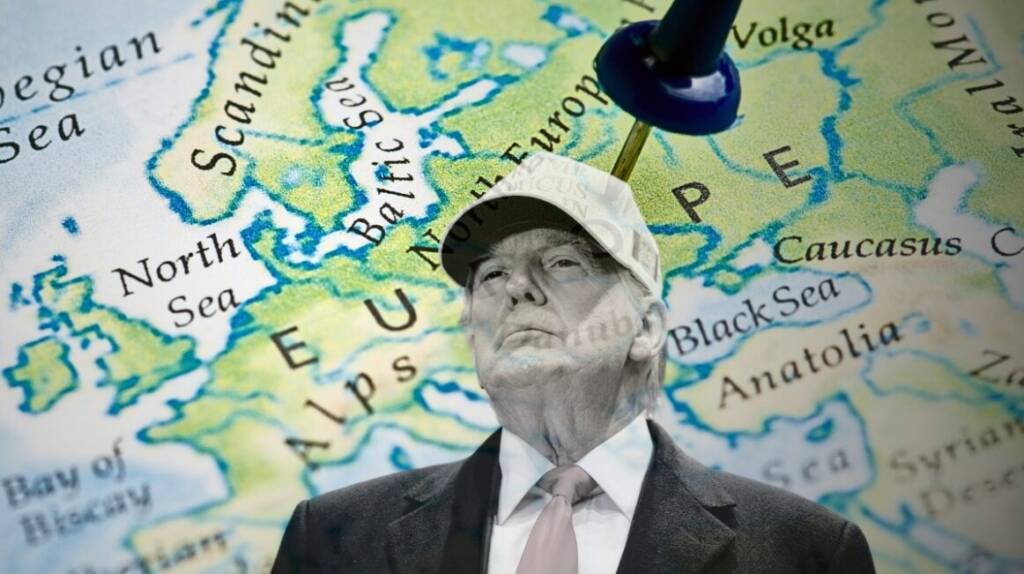Sixty years ago, the notion that “Europe’s fate is in Germany’s hands now” would have sent chills down many spines. The early 20th century wars had ingrained a deep-seated belief among Europeans that German dominance was dangerous. Even though West Germany was a NATO stalwart during the Cold War, the alliance was designed to ensure Germany never got too powerful or independent. NATO’s first secretary general famously stated that the alliance’s purpose was “to keep the Soviet Union out, the Americans in, and the Germans down.” This sentiment lingered for a long time—Margaret Thatcher even opposed German reunification after the Berlin Wall fell, fearing a powerful Germany in the heart of Europe.
But a lot can change in half a century. The U.S., once the guarantor of European stability, is now considered the world’s most unpredictable superpower. The potential return of Trump to the presidency could mark the end of U.S. support for Ukraine and a significant pullback from NATO and the transatlantic alliance. A recent Politico report highlighted some critical insights:
Trump is unlikely to quit NATO outright, according to former Trump national security officials and defense experts likely to serve in a second term. However, even if he doesn’t officially leave, NATO might not survive another Trump presidency unscathed.
To keep the U.S. involved, Trump would expect European countries to significantly boost their NATO spending and adopt a “radical reorientation” of NATO. The U.S. would maintain its nuclear umbrella over Europe, but the bulk of infantry, armor, logistics, and artillery would shift to European hands. Parts of this plan were outlined in a February 2023 article by the Trump-affiliated Center for Renewing America, with more details emerging since then.
This shift would involve “substantially downsizing America’s security role,” stepping back from being the primary provider of combat power in Europe, and only providing support in times of crisis, explained a senior advisor to Russell Vought, expected to hold a senior role in a second Trump administration.
“We can’t be doing ten times what the Germans are doing anymore, and we’ve got to be prepared to be tough with them. There’s got to be consequences,” former Trump official Elbridge Colby said. “We want NATO to be active, but we want it to be with the Europeans in the lead…The United States does not have enough military forces to go around. We can’t break our spear in Europe against the Russians when we know the Chinese and Russians are collaborating, and the Chinese are a more dangerous and significant threat.”
This shift was anticipated, Trump or no Trump. Colby’s right—the U.S.’s weakened defense-industrial base and budget can’t support standing against both Russia and China. With China being the bigger threat, most of America’s resources need to focus on East Asia. This is the harsh reality of balancing economic and military forces.
As the U.S. pulls back, Germany becomes Europe’s most crucial economic and military player. With 83 million people, Germany is the EU’s most populous state, commanding over a fifth of the EU’s GDP and about a quarter of its manufacturing output.
Despite its economy being more manufacturing-heavy than other European nations, Germany maintains higher living standards than other major European economies, including the UK.
However, Germany isn’t the EU’s or NATO’s leader. The EU has no single leader, and with the U.S. disengaging, neither does NATO. But Germany’s size and importance mean that if it doesn’t step up, these organizations will drift aimlessly.
“Rudderless and inertial” aptly described Europe’s response to the banking and fiscal crisis of the early 2010s. German insistence on fiscal austerity delayed Europe’s recovery. Most of the region has grown slower since that crisis, likely because Europe failed to act as swiftly as the U.S. did.
The same can be said about the European response to the growing Russian threat. Some smaller European countries, like Poland, are significantly increasing their defense spending. But Germany, despite its promises, has only marginally increased its defense budget, barely meeting NATO’s 2% GDP spending commitment. This would suffice for peacetime, but Europe isn’t at peace, and Germany shows no sign of mustering the much larger sums needed. Poland spends 5% of its GDP on defense, Russia more than 6%. Germany’s defense-industrial base is ramping up painfully slowly.
Leon Mangasarian expressed frustration with Germany’s sluggishness in the Spectator, stating that without Germany taking a leading political and military role, Europe’s defense won’t hold. €100 billion for the military is peanuts compared to what’s needed after decades of underspending. Scholz’s government refused to make NATO’s 2% GDP target for military spending legally binding. If German leaders were serious about defense, they would justify cutting butter for guns, saying Germany faces an existential threat.
German military procurement moves at a glacial pace, with backlogs for critical systems. Even if ordered, new equipment will take years to become operational. But Germany isn’t even ordering, as Frank Haun, CEO of KNDS, which builds the Leopard II tank, pointed out. In the 1980s, West Germany had over 7,000 tanks and armored vehicles. Today, Germany has about 300 tanks.
In essence, Germany is sleepwalking into disaster, dragging Europe with it. With America stepping back, Europe stands alone against Putin’s Russia. On paper, Europe outmatches Russia economically and demographically, but without Germany leading, the reality will be starkly different.
